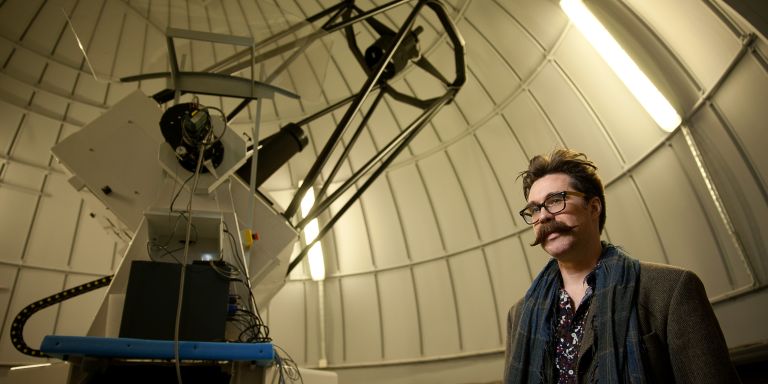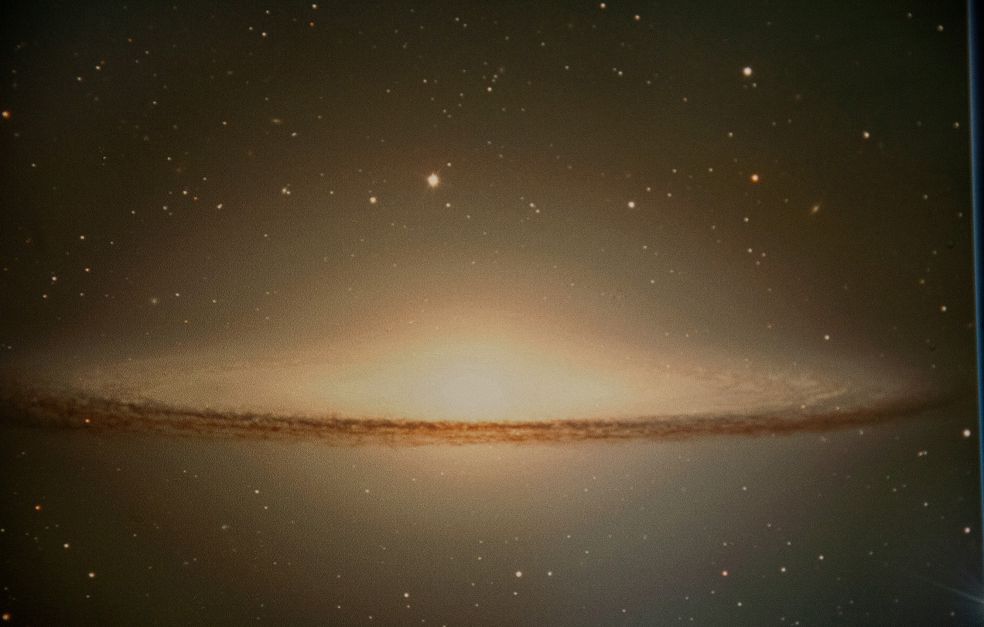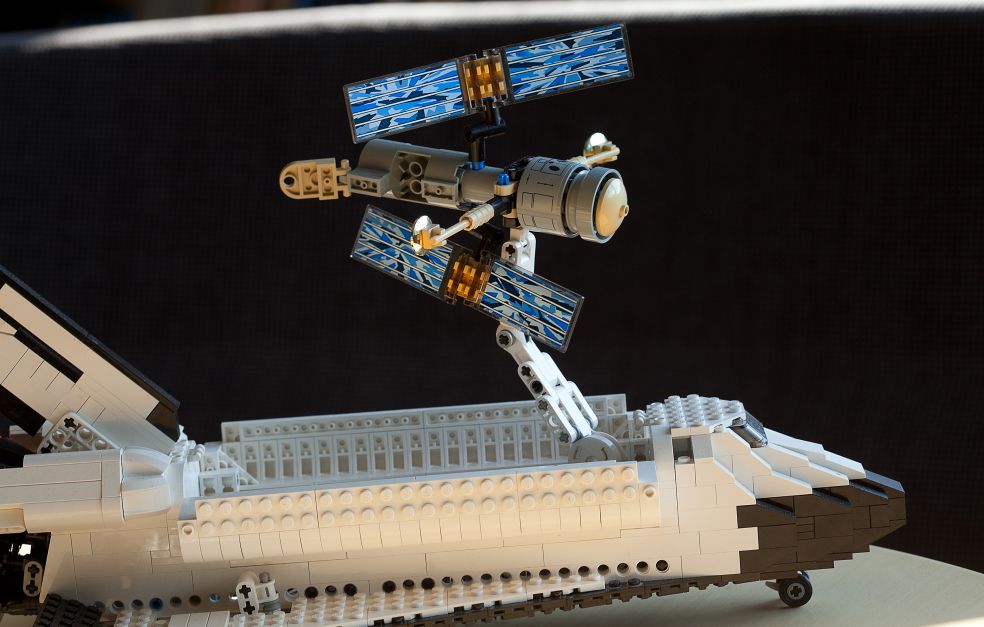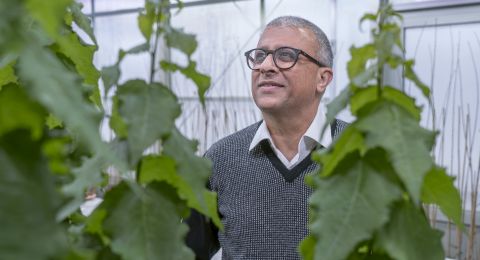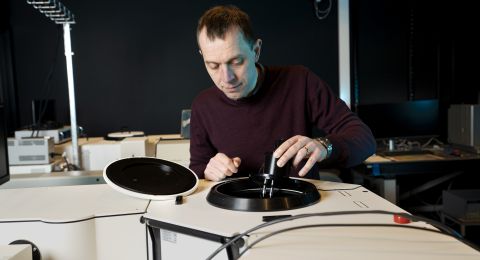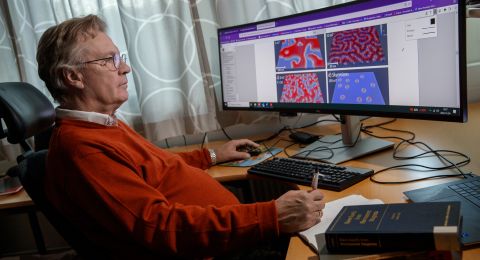Matthew Hayes is studying an important epoch in the history of the universe – reionization. He is heading a major international project in which ultraviolet radiation and telescopic images of 350 early galaxies are being analyzed. The aim is to understand the process by which the universe went from being neutral to the ionized universe that still exists today.
Matthew Hayes
Associate Professor of Astrophysics
Wallenberg Academy Fellow, prolongation grant 2018
Institution:
Stockholm University
Research field:
Mapping reionization in the early universe via observations of Lyman-alpha radiation
The observable universe contains around 100 billion galaxies. Wallenberg Academy Fellow Matthew Hayes wants to study a major phase transition of gas in the early life of the universe – reionization. He is the driving force behind an international project to study 350 well-known galaxies.
They are using images from the Very Large Telescope (VLT), located in the Atacama Desert in northern Chile. Hayes explains:
“It’s a major project, with 130 observation hours using the largest telescope, and researchers from eight countries working together. The age in which reionization occurred is incredibly interesting. It’s the last phase transition in the universe. We don’t know much about how it happened, and we think it’s important to gain a better understanding of the process.”
Hayes’ team is leading the observation part of the project.
“We’re good at understanding how we can use the resources of the telescopes, measuring and analyzing images and spectra. But to understand the entire process, we also have to use more complicated data observations and analyses. To do so, we’re collaborating with fellow scientists in Denmark, Germany and the U.S.”
Ionized bubbles
Following the Big Bang, some 13.8 billion years ago, it is assumed that matter was ionized, i.e. it consisted of electrons and atomic nuclei. After some hundreds of thousands of years, when the universe had expanded and cooled sufficiently, a gas formed, made up of neutral atoms, mostly of hydrogen. Many millions of years later stars and galaxies began to form from hydrogen.
“The universe was neutral at that time, but by the time the first stars and galaxies had been created the entire universe had been ionized once more,” Hayes says.
Simply put, ionization is the process by which electrically neutral atoms lose electrons, a process that transforms them into positively charged ions. Across the universe, the gas between galaxies was ionized by high-energy ultraviolet radiation from early stars, creating the conditions for light to disperse.
“One theory is that ionized bubbles formed in the matter between galaxies, and that those bubbles grew ever larger over time.”
To illustrate the process, Hayes draws a graph showing bubbles of various sizes on his whiteboard. The x-axis is the time axis of the universe; the y-axis is the size of ionized bubbles.
“I want to study the inside of the ionized bubbles. But it’s complicated because we can’t see the actual gas phases – we have to use various telescopic observations and measurement methods to try to understand the process.”
Measuring long-range radiation
One method Hayes is using is to measure Lyman-alpha radiation – ultraviolet light of a specific frequency and form. The radiation passes through the atmosphere and can be observed by the terrestrial telescopes in Chile. He elaborates:
“Over the past ten years great strides have been made in the use of Lyman-alpha radiation in astronomy. Measuring it can answer many questions, reionization being one of the major ones.”
It is not the first time Hayes has used Lyman-alpha radiation in his studies. In early 2021 he received the Strömer-Ferrner award from the Royal Swedish Academy of Sciences for his groundbreaking work in increasing our understanding of Lyman-alpha radiation from galaxies and the gas in which they are embedded.
The galaxies being studied in the project formed during the early life of the universe, when it was 800 million to about two billion years old.
“We want to see how the emission line of Lyman-alpha radiation changes over the time span. The shape of the emission line, for example, can tell us how large the ionizing bubbles are in different phases of the process. But we also need to carry out advanced computer simulations to understand how it works.”
“It feels great to receive this grant – it gives me security in my research. Previously I have focused on local galaxies. But I don’t want to get stuck in a rut. If we look deeper into the universe, we can study many more galaxies at the same time and generate more statistics, which I think is fun.”
Difficult analyses
The location of the 350 galaxies is an area well known to astronomers and within the observation field of the Hubble space telescope. This enables Hayes and his colleagues to benefit from the Hubble image library, in addition to the observations made by VLT in Chile. In a few years’ time they hope to be able to use observations from the next generation space telescope – the James Webb telescope, which is due to replace Hubble.
Hayes grew up in England, where he studied physics. His first stint in Sweden was as a PhD student at the Department of Astronomy at Stockholm University. Having received his PhD in astrophysics, he researched for some years in Switzerland before returning to Sweden to set up his own research team.
Hayes considers that finding people with the right skills is a major challenge to be met if the project is to succeed:
“Ahead of us lies observation of a galaxy at the far end of the universe. The observation will last eighty hours, and be of a single galaxy. The analyses are difficult to perform, so we need to have highly experienced data analysts capable of extracting relevant data from the images so we can measure the right parameters.”
Text Susanne Rosén
Translation Maxwell Arding
Photo Magnus Bergström

